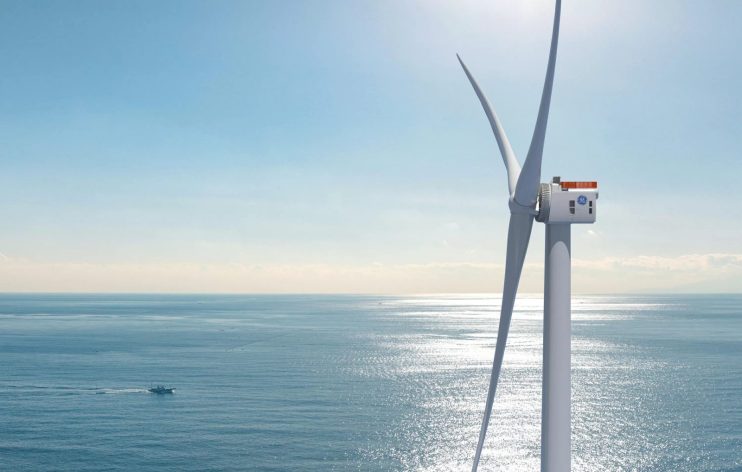UK fiscal watchdog puts cost of reaching net zero at £1.4 trillion

The cost of the UK reaching net zero by 2050 could be as high as £1.4 trillion, according to figures included in a report published by Britain’s fiscal watchdog today.
The UK economy will require over £1 trillion in investment over the next three decades to hit the government’s target of making Britain carbon neutral, estimates included in the Office for Budget Responsibility’s latest Fiscal Risks report revealed.
The fiscal impact of achieving net zero in an early action scenario would add 21 per cent of GDP
to public sector net debt by 2050-51, over £450bn in today’s terms. But, this is smaller than the amount of additional net debt the government took on in response to the pandemic.
The OBR said the forecasts are based on the assumption the government bares a quarter of the cost of the transition.
Read more: Minister pushes back on claim of £90,000 bill to UK households for achieving net zero
Staggeringly, the report said that if the UK took no action to curb emissions, the debt to GDP ratio could sky rocket to a record high of 289 per cent.
The projections were included alongside the fiscal watchdog’s dossier on the biggest threats it thinks the UK’s public finances are likely to face in the coming year.
The report warned that Britain is a facing a “catastrophic” triple threat of the “coronavirus pandemic, climate change, and the cost of government debt.”
The OBR warned that “the arrival of two major economic shocks in quick succession need not constitute a trend, but there are reasons to believe that advanced economies may be increasingly exposed to large, and potentially catastrophic, risks.”
“As countries’ exposure to large, and potentially catastrophic, risks increases, so do the associated risks to their public finances” it added.
“This is because such risks are not only more disruptive to the economies that generate governments’ revenues but also because they are more likely to overwhelm private risk management and insurance mechanisms, prompting governments to step in as insurer of last resort.”
Projections included in the report highlighted that Chancellor Rishi Sunak is facing a £10bn a year deficit for the next three years to cope with the ongoing impact of the pandemic.
Health spending may have to rise £7bn above present levels to fund test and trace and revaccination programmes.
The organisation said spending on transport would have grow by £2bn in order to plug cash flow shortfalls at Great British Railways and Transport for London if passenger numbers do not return to pre-pandemic levels.
“These potential unfunded legacy costs of the pandemic represent a material risk to the public spending outlook” the OBR noted.
Responding to the report, Chancellor Rishi Sunak said it “underline[s] the importance of returning our public finances to a more sustainable path over the medium term, which is why we made difficult choices at the last budget and why this government is committed to fiscal responsibility.”
“The OBR has confirmed that the ‘unprecedented’ support the government has provided through the pandemic has helped to keep companies solvent and people in jobs. We will continue to invest in our public services and support those who need it as the economy recovers – including through our plan for jobs.”
Read more: UK fiscal watchdog: Government finances “increasingly exposed” to global shocks
UK economy to reach pre-Covid levels two years after onset of virus
The UK economy will recover to its pre-pandemic size just two years after the onset of Covid, the OBR predicted.
“Our latest forecast assumes it will regain its pre-pandemic level by the middle of next year, just
over two years since coronavirus arrived in the UK” it said.
“Economic activity rebounded quickly once… restrictions were eased.”
The organisation highlighted that the pace of the rebound from the Covid crisis is likely to be much faster than the recovery from the financial crisis, when it took the UK economy four and a half years to hit pre-crisis output levels.
The economy has proved to be much more resilient to Covid shocks than first expected, the OBR highlighted, adding that this was being mainly driven by “the unprecedented amount of fiscal support provided to all parts of the economy.”
Stickier inflation could keep debt to GDP elevated
The government would not benefit from persistently higher inflation eroding the value of the stock of public debt, the organisation said.
Typically, strong inflation increases the monetary value of the economy, while the stock of debt stays constant, meaning the debt to GDP ratio falls in absolute terms.
However, much of the government’s debt is linked to inflation, meaning it will rise in line with price rises. As a result, persistently elevated inflation could leave the debt to GDP ratio above 100 per cent in the long term.
“Higher post-pandemic government debt, combined with a shorter effective debt maturity as a by-product of QE, leaves the public finances more exposed, and more quickly, to increases in interest rates” the organisation said.
Read more: Haldane: Inflation will reach four per cent this year